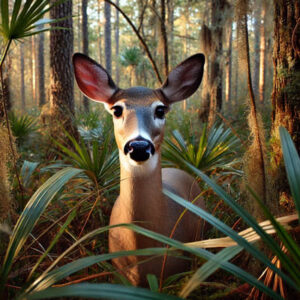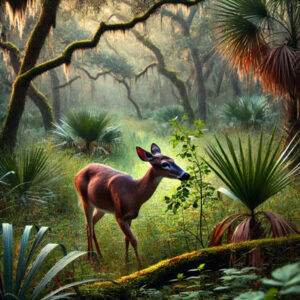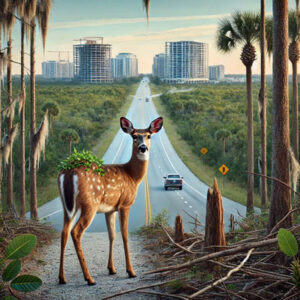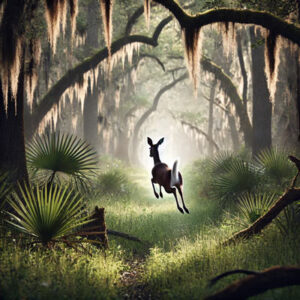 White-tailed deer (Odocoileus virginianus) are some of the most recognizable wildlife in Central Florida. They’re common in forests, wetlands, and even suburban areas where wooded spaces remain intact. Yet, despite their numbers, spotting one still feels special—like a quiet reminder that the wild world is never far away.
White-tailed deer (Odocoileus virginianus) are some of the most recognizable wildlife in Central Florida. They’re common in forests, wetlands, and even suburban areas where wooded spaces remain intact. Yet, despite their numbers, spotting one still feels special—like a quiet reminder that the wild world is never far away.
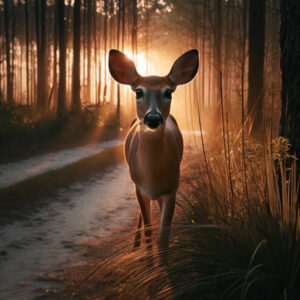
Each encounter plays out the same way: they freeze, their large, dark eyes locked onto mine, ears twitching as they decide whether I’m a threat. For a moment, it’s like a silent standoff—neither of us moving, just assessing. Then, as if deciding I’ve overstayed my welcome, they bolt. Their powerful legs send them leaping into the brush, that unmistakable white tail flashing like a warning signal to others.

One morning, I had a particularly memorable experience. A heavy fog had settled over the landscape, making everything feel softer, quieter. As I walked, a deer emerged from the mist ahead of me, standing completely still, watching. I scrambled for my phone, fumbling with the camera, adjusting the settings while he patiently waited. Only after I’d taken a few pictures did he finally turn and disappear into the fog. I returned the next day, hoping for a repeat encounter—but as anyone who has spent time observing deer knows, they don’t work on our schedules.
Why Do Deer “Freeze” When They See You?
This moment of stillness before they flee isn’t just curiosity—it’s a survival tactic. Deer rely on their ability to detect movement rather than focusing on fine details. By freezing, they can better blend into their surroundings and evaluate whether they need to run. If they remain unnoticed, they’ll often stay put. But as soon as they sense too much movement or detect a potential threat, they’re gone in an instant.
Where to See White-Tailed Deer in Central Florida
If you’re hoping to spot white-tailed deer in the wild, Central Florida has plenty of good locations, including:
State parks and wildlife preserves – Places like Myakka River State Park, Paynes Prairie Preserve, and Ocala National Forest provide prime habitat for deer.
Early mornings and late afternoons – Deer are most active at dawn and dusk, avoiding the heat of the day.
Near water sources – Swamps, marshes, and riverbanks are common places to find them, especially in dry seasons.
What Do White-Tailed Deer Eat?
Deer are herbivores with a diet that changes with the seasons. In Florida, they graze on a mix of:
Leaves and twigs from shrubs and trees
Acorns and other nuts
Fruits like palmetto berries
Grasses and forbs (non-woody plants)
Since Florida’s mild winters allow for year-round growth, food sources are always available, but deer still shift their diets based on what’s most abundant.
Challenges Facing Florida’s Deer
While white-tailed deer are thriving in Florida, habitat loss is an ongoing issue. Urban development continues to shrink their natural spaces, forcing them to adapt to smaller and more fragmented forests. Additionally, roads pose a significant danger, with deer-vehicle collisions increasing in areas where green spaces are divided by highways.
A Reminder of the Wild
Every time I encounter a deer, I feel both privileged and slightly guilty—like I’ve interrupted something private. But that’s part of the beauty of seeing them in the wild. They aren’t there for us. They have their own routines, their own quiet existence woven into the landscape. And while I may hope for another encounter, I know it’s never guaranteed.
So if you’re out exploring Central Florida’s trails and woodlands, keep your eyes open. You may just catch a white-tailed deer watching you—just as curious about you as you are about them.

